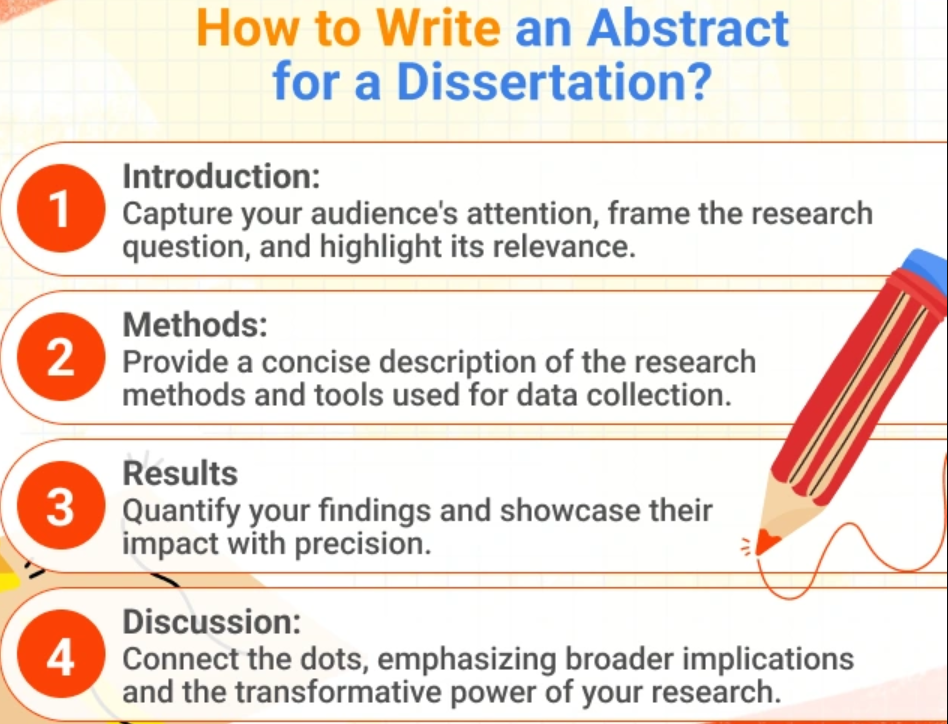The dissertation is the culmination of years of dedicated research and study. It represents the peak of your academic journey, and its successful presentation hinges on several factors, one of the most crucial being the dissertation abstract. This concise summary is the reader’s first, and often only, impression of your work. A well-crafted dissertation abstract can pique interest, encourage further reading, and ultimately contribute to the impact of your research. Conversely, a poorly written abstract can lead to missed opportunities and a misrepresentation of your hard work. Therefore, understanding how to write a dissertation abstract is paramount.
This article will guide you through the process, offering a clear understanding of the purpose, structure, and essential components of a compelling dissertation abstract.
Why is the Dissertation Abstract So Important?
Before diving into the “how,” it’s important to understand the “why.” The dissertation abstract serves several vital functions:
- First Impression: It is often the first part of your dissertation that a reader will encounter. It’s your opportunity to make a strong and lasting initial impression.
- Search and Discovery: Databases and online repositories often rely on abstracts for indexing and searchability. A well-optimized abstract improves the discoverability of your research.
- Decision Making: Readers use the abstract to quickly determine the relevance and value of your dissertation to their own research or interests. A clear and informative abstract will encourage them to read further.
- Time Management: For busy academics, quickly grasping the core arguments and findings through an abstract saves valuable time.
- Preview of the Full Work: The abstract acts as a roadmap, offering a brief preview of the entire dissertation’s content and its key contributions.
What Should Your Dissertation Abstract Include?
While specific requirements can vary across disciplines and institutions, the following elements are generally considered essential for a strong dissertation abstract:
- Introduction/Background: Begin by setting the context of your research. Briefly introduce the topic, problem, or gap in knowledge that your dissertation addresses.
- What area are you working within?
- What is the broad context of your study?
- Why is this topic important?
- Research Question/Problem Statement: Clearly state the central research question or the specific problem that your dissertation investigates.
- What is the specific question that your research aims to answer?
- What is the hypothesis that you intend to test?
- What problem are you trying to solve?
- Methodology: Briefly describe the methods and approaches used in your research.
- What research approach did you use (e.g., qualitative, quantitative, mixed methods)?
- What kind of data was collected (e.g., surveys, interviews, experiments)?
- How was the data analyzed?
- Key Findings/Results: Summarize the key findings or results of your research.
- What were the most significant findings of your research?
- What conclusions can be drawn based on your results?
- Avoid overly technical language or detailed statistical information.
- Conclusion/Implications: State the main implications of your findings and the contributions your research makes to the field.
- What are the implications of your findings for your area of study?
- What impact or contribution does your dissertation make to the current knowledge in your field?
- What are the main takeaways from your research?

Structuring Your Dissertation Abstract: A Step-by-Step Guide
Here is a systematic approach to effectively write a dissertation abstract:
- Write the Dissertation First: It might seem counterintuitive, but you should always write your dissertation abstract after completing your dissertation. This ensures your abstract accurately reflects the final content and avoids the need for constant revisions as your research evolves.
- Understand Length Requirements: Check with your university or department for specific length requirements for the abstract. Typically, dissertation abstracts are between 150 and 350 words, but this can vary. Adhere to the specified guidelines closely.
- Identify the Core Elements: Using the “What Should Your Dissertation Abstract Include” section above, carefully identify each core element. Jot down notes on how each aspect will be summarized.
- Craft a Concise Introduction: Begin with a compelling sentence that immediately draws the reader into your research topic. Keep the background information focused and relevant to your specific study.
- Clearly State Your Research Question: Present the central question or problem your research addresses in a clear and concise manner.
- Summarize Your Methodology: Briefly outline the main approaches and data sources that you used in your research. Avoid unnecessary detail; focus on the ‘how’ and ‘why’ of your research design.
- Highlight Key Findings: Present the most significant results or conclusions of your research in a succinct way. Be precise and avoid ambiguous statements.
- State the Implications and Contributions: Explain what your findings mean in the broader context of your field. Emphasize the contribution that your research is making to the knowledge base.
- Write the First Draft: Using your notes, compile your summarised content into a first draft, making sure to cover the essential elements.
- Review and Revise: Once you have your first draft, critically review it for clarity, conciseness, and accuracy. Ask yourself:
- Is each element clear and concise?
- Is it free of jargon and technical terms that a general reader might not understand?
- Does it accurately reflect the content of my dissertation?
- Does the abstract for a dissertation achieve its purpose of representing the research?
- Seek Feedback: Ask peers, mentors, or supervisors to read your abstract and offer feedback. Their perspective can help you identify areas for improvement.
- Polish and Proofread: Finalise your dissertation abstract by carefully polishing the writing and proofreading for any errors in grammar, spelling, or punctuation. A clean, well-written abstract enhances your credibility.
Common Mistakes to Avoid When Writing a Dissertation Abstract
- Too Long or Too Short: Deviating from the required word count can be detrimental.
- Too Much Detail: Avoid getting bogged down in unnecessary details. The abstract is a summary, not a replication of your entire dissertation.
- Lack of Clarity: Ensure that your abstract is easy to understand, even for someone outside of your specific field.
- Vague or Ambiguous Language: Use precise and specific language to convey your research accurately.
- Including Information Not in the Dissertation: Every claim in the abstract must be substantiated by material within the dissertation.
- Forgetting to Highlight the Contribution: A good dissertation abstract will always clearly indicate the value and significance of the research.
- Writing in the First Person: While not always a strict rule, it’s generally advisable to avoid the use of “I,” “we,” etc. and maintain a professional tone. Instead, opt for language such as “This study investigated” or “The research demonstrates.”
The Importance of Professional Assistance
While the above guide offers a detailed approach to writing a dissertation abstract, some students might struggle with the task. If you are feeling overwhelmed by dissertation writing, remember that resources are available. You can consider seeking assistance from a professional dissertation writer, or utilize services designed to refine and improve academic writing. The key is to ensure the abstract for a dissertation accurately reflects the research and achieves the aims of a concise summary.
Many online services and individual consultants offer help in academic writing. It is important to note that you cannot ask anyone to “write my dissertation”. However, these resources can help with refining your draft and assisting with crafting the perfect dissertation abstract.
The Bottom Line
The dissertation abstract is a critical component of your academic work. It acts as a gateway to your research, providing readers with a snapshot of your findings and their importance. By following the guidelines outlined above and investing the time and effort needed to write a clear and concise abstract, you can ensure that your research is seen in the best possible light. A well-crafted dissertation abstract will enhance the reach and impact of your hard work, contributing to the wider academic conversation within your field. Therefore, make sure to allocate the necessary time and attention to produce an effective representation of your valuable research.
Hire Professional Dissertation Writing Service
Crafting a compelling dissertation abstract could still be challenging even with all the above resources. At Exemplary Dissertations, we are the experts to engage for help with writing your dissertation. We provide professional dissertation writing help for undergraduate, Degree and PhD students. Our service covers topic suggestion, dissertation writing, proofreading, editing, formatting and plagiarism removal. Besides dissertations, we also write authentic research papers, essays and case studies.

